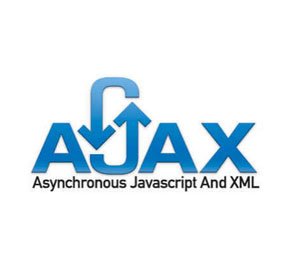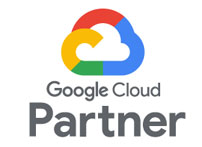
Ajax is not a programming dialect or an instrument, but rather an idea. Ajax is a customer side script that conveys to and from a server/database without the requirement for a postback or a complete page revive. The best definition I’ve perused for Ajax is “the strategy for trading information with a server, and redesigning parts of a site page – without reloading the whole page.” Ajax itself is for the most part a non specific term for different JavaScript strategies used to associate with a web server powerfully without fundamentally stacking numerous pages. In an all the more barely characterized sense, it alludes to the utilization of XmlHttpRequest items to interface with a web server powerfully by means of JavaScript.
Advantages of Ajax
There are 4 fundamental advantages of utilizing Ajax as a part of web applications:
Callbacks: Ajax is utilized to play out a callback, making a brisk round outing to and from the server to recover and/or spare information without posting the whole page back to the server. By not playing out a full postback and sending all structure information to the server, system use is minimized and faster operations happen. In destinations and areas with confined data transmission, this can significantly enhance system execution. More often than not, the information being sent to and from the server is insignificant. By utilizing callbacks, the server is not required to process all structure components. By sending just the fundamental information, there is restricted handling on the server. There is no compelling reason to process all structure components, prepare the ViewState, send pictures back to the customer, or send a full page back to the customer.
Making Asynchronous Calls: Ajax permits you to make nonconcurrent calls to a web server. This permits the customer program to abstain from sitting tight for all information to land before permitting the client to act again.
Easy to use: Because a page postback is being dispensed with, Ajax empowered applications will dependably be more responsive, quicker and easier to understand.
Expanded Speed: The principle motivation behind Ajax is to enhance the pace, execution and ease of use of a web application. An incredible case of Ajax is the motion picture rating highlight on Netflix. The client rates a motion picture and their own rating for that film will be spared to their database without sitting tight for the page to revive or reload. These motion picture appraisals are being spared to their database without posting the whole page back to the server.
Specialized Aspects of Ajax
Ajax callbacks should be possible by instantiating a XMLHttpRequest object in the customer side JavaScript. The XMLHttpRequest item can be utilized to specifically call server-side articles like pages and web administrations. These pages and web administrations will either spare and/or return information.
Ajax was initially an acronym for Asynchronous JavaScript and XML. “Offbeat” implies that numerous occasions are occurring autonomously of each other. Once a customer introduces an Ajax callback to the server, the customer won’t have to sit tight for a reaction and can keep on using the web application while the solicitation is being handled. Once done, the server will send a reaction back to the customer and the customer will prepare it as essential.
What Advances have Been Made to Ajax?
JavaScript is the customer side programming dialect and XML is a markup dialect to characterize information. JSON is another markup dialect to characterize information. JSON (JavaScript Object Notation) is much less demanding to use with JavaScript than XML. With regards to Ajax and JavaScript, JSON Web Services are supplanting XML Web Services.
Another significant development to JavaScript and Ajax is the JavaScript object library called jQuery. This free, open-source programming is a wrapper around JavaScript. jQuery is utilized to effectively compose customer side JavaScript to explore and control a page and make nonconcurrent Ajax callbacks.
By utilizing jQuery and JSON Web Services, Ajax callbacks have gotten to be standard programming rehearses for outlining and creating web applications.
The Ajax Control Toolkit is a suite of controls made by Microsoft that is incorporated into Visual Studio and can be relocated onto web shapes simply like html and server controls. These controls are expected to be utilized for Ajax callbacks. Be that as it may, they can likewise be utilized as should be expected customer as well as server controls. For instance, Asp.Net does not accompany the Tabs controls. Be that as it may, the Ajax Control Toolkit does. The Tab control can postback to the server simply like server controls.
Where Should Ajax be Used?
Ajax ought to be utilized anyplace as a part of a web application where little measures of data could be spared or recovered from the server without posting back the whole pages. A decent case of this is information acceptance on spare activities. Another illustration would be to change the qualities in a drop down rundown box taking into account different inputs, for example, state and school list boxes. At the point when the client chooses a state, the school list box will repopulate with just universities and colleges in that state.
Another extraordinary case is the point at which the customer needs to spare or recover session values from the server, in view of a client inclination, for example, the stature, width or position of an item. Modifying the width could make a callback to the server to set the session variable for the new width. Along these lines, at whatever point the page is revived, the server can alter the article’s width in light of this session variable. Something else, the article would do a reversal to its underlying default width.
Different components incorporate content clues and autocomplete content boxes. The customer sorts in two or three letters and a rundown of all values that begin with those letters show up beneath. A callback is made to a web administration that will recover all values that start with these characters. This is a fabulous element that would be unimaginable without Ajax and is likewise part of the Ajax Control Toolkit.
Segue as of late utilized Ajax to bolster a customer application that had issues because of restricted data transmission and page size. The blend brought about the application to take too long to recover information and presentation it on the page. At times, the web server would essentially not have the assets to handle the solicitation and timeout. The best answer for this issue was Ajax.
To take care of this issue, we made JSON Web Services on the web server keeping in mind the end goal to recover the insights about the chose thing. The JSON web administration would recover the information and proselyte into JSON and return a JSON string. Rather than presenting back on the server, the customer would call the web administration when a thing was chosen from the rundown box. We utilized jQuery to make an offbeat Ajax call to the web administration. Once the customer recovered the information over from the web administration, more customer side handling was done to show the data on the page. The time it took to show the points of interest on the page after the thing was chosen was immediate. There was no page glint, invigorate or postback included.



















